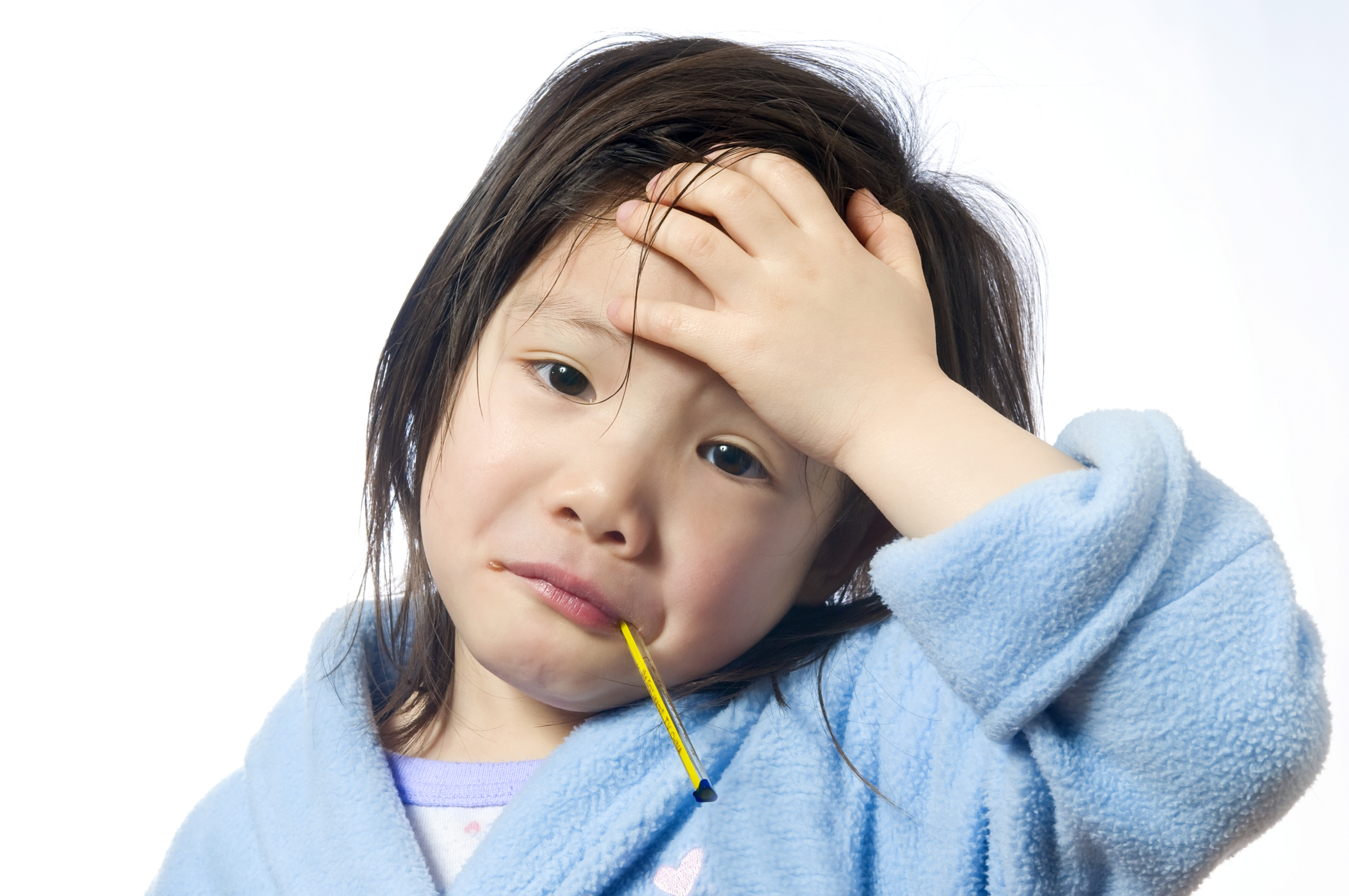Skip to content
Understanding and Managing Fever

Fever is a common sign of illness in children and therefore an important symptom for parents to understand. A good understanding of fever will preserve your child’s health and prevent needless anxiety for you.
NORMAL TEMPERATURE: Normal core (or central) body temperature for humans varies through out the day (97.5 and 100.5 F measured in the rectum or 97.0 to 100.0 F measured in the mouth).
MEASURING TEMPERATURE: We recommend measuring temperatures either rectally or orally to obtain accurate, most reliable temperatures. Ear probe or forehead strip temperatures are very unreliable. Temperatures are best obtained using a standard glass thermometer or electric digital thermometer placed in the rectum (<Age 2-3) or mouth (older cooperative child). However, an axillary temperature greater than 100 F is a fair indicator of existence of a fever. Remember, the height of a fever does not reflect severity or danger of an illness. (See #1 below)
CAUSES OF FEVER: Such things as intense or prolonged exercise (running or crying), some immunizations, severe overdressing, excessive room temperature, and most commonly, a normal response to infection are all potential causes of fever.
PURPOSE OF FEVER: When fever occurs because of an infection by germs (viruses or bacteria), fever is known to be an important part of our body’s response to the initial phase of infection. Fever not only helps the body control infection, it also is a helpful warning sign to us that the body is working to resolve an infection. Unfortunately, many people are uncomfortable when they have a fever. Decreased appetite, aches, listlessness, and/or feeling of being hot (or cold) are all common symptoms often associated with fever. Infants and toddlers are often irritable and unhappy.
What to do and not to do:
- DON’T USE THE THERMOMETER AS A “SICK-O-METER”: Don’t assume your child can’t be seriously ill without a high fever (they can be!) On the other hand, don’t assume your child is in danger with high fever alone. Fevers of 106 F are often caused by harmless infections and does not cause tooth damage, sterility, or brain damage. A few children with fever, about 4%, develop a brief convulsion (febrile seizures). Although these may be frightening, they do not correlate with the height of the fever and are generally harmless.
- DON’T ATTEMPT TO “CONTROL” FEVERS: You will only become frustrated trying to “break” the fever. Remember, your child’s problem is the illness associated with the fever and not the fever itself.
- DO MAKE THE CHILD AS COMFORTABLE AS POSSIBLE: If your child complains about being “hot” or seems irritable, they might feel better after giving he/she a fever reducing pain reliever (acetaminophen or ibuprofen). Additionally, you can use lukewarm water by bathing or sponging. If your child seems chilled, an extra blanket is adequate.
- OBSERVE FOR TIMELY RESOLUTION OF THE ILLNESS: Fever caused by harmless (though miserable) viruses like the common cold, usually resolve in a matter of two or three days. Medical investigation might be needed for illnesses that have persistent fever or may be causing the child significant discomfort. Tolerance for resolution of the fever phase of an illness depends on the prevalent illnesses within the community.
- OBSERVE FOR SIGNS OF SERIOUS ILLNESS: The height of fever is a very unreliable indicator of the absence or presence of serious illness. The child’s interaction with the environment is the best way to determine this. You should expect any child who just doesn’t feel well to have disruptions of usual appetite, sleep and play habits and to be “achy all over”, fussy, or hard to please. A good sign is being able to get your child to at least intermittently smile. However, you should never expect your child to fail to recognize you, act drugged or drunk, cry with pain when held or moved (especially the head or neck), or to have labored, grunting breathing. Presence of any of these sings should prompt IMMEDIATE contact with the doctor. These signs are relatively easy to identity in older children but the younger the child, the more careful the observation needs to be.
- IF YOUR CHILD IS UNDER 2 MONTHS OF AGE: Because a child this age is difficult to assess for interaction with their environment, the doctor wants to be notified of ANY fever 101 F or greater. You should only take and infant’s temperature rectally due to inaccuracies of other methods.

Write Reviews
Leave a Comment
No Comments & Reviews